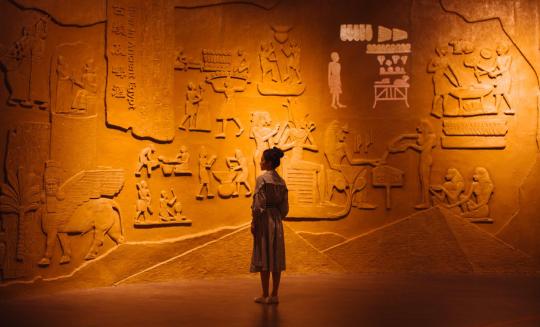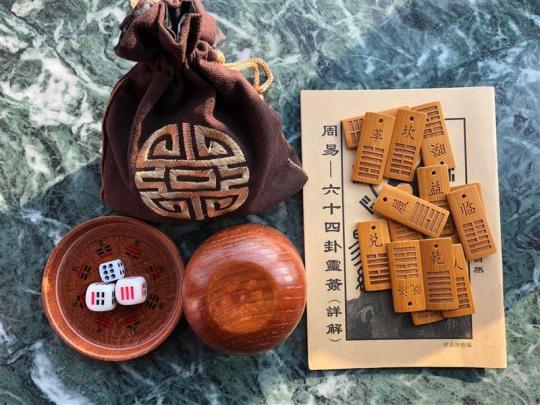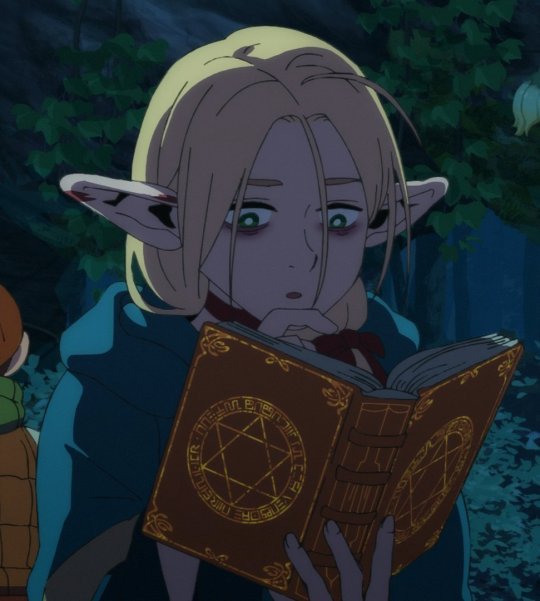#hexagrams
Explore tagged Tumblr posts
Text

By Waylon Wraith
#contemporary art#surrealism#surrealist#surreal#surrealistic#drawings#collages#i ching#yijing#hexagrams#mandala#psychedlia#waylon wraith
17 notes
·
View notes
Text
Diverse Connections: Ancient Practices of Divination
Embracing Wisdom of the Past Welcome, dear seekers, to the enchanting world of Divination. We are thrilled to embark on this exploration of practices from around the world with you. Whether you’re a seasoned traveler on the path of spiritual discovery, or stepping into the realm of the mystical for the first time, you’ve found a warm and inviting cohort here with Optimal Mastery. Divination is…

View On WordPress
#Amulets#Astrology#Babylonian#Course#Divination#Egyptian#Greek#Hellenistic#Hexagrams#I-Ching#Interpretation#Intuition#Mesopotamian#Mysticism#Oracle#Psychic Exercises#Sacred Animals#Symbolism#Symbols#Talismans#Totems#Visualization
2 notes
·
View notes
Text
i ching
New series!
✨ Opposite & contrary hexagrams of I Ching ✨
The series was published online a couple of years ago, by Tres Mancias Consultancy. Finally, it's now complete, with 20 articles grouping signs to read altogether, as a whole.
When you get an answer, I Ching points to a specific hexagram but also alludes to other related ones that, somehow, are part of it, in composition and meaning.
The series includes them all, as a group sequence to concretely see in any type of matter. With a simple writing style, you will flow across pages without any type of knowledge about I Ching!
Ask for and receive a free .pdf here.

ASK HERE
1 note
·
View note
Text
I think I'm gonna have this as a reminder whenever I get the urge to post anything on reddit again lol (from Ming Yi the 36th hexagram of the I Ching)

1 note
·
View note
Text
Exploring the Wisdom of the I Ching
The I Ching, also known as the Book of Changes, is an ancient Chinese divination text that has been revered for thousands of years. Rooted in Taoist philosophy and mysticism, the I Ching is more than just a system of divination; it is a profound guide to understanding the dynamic nature of the universe and the patterns of change that shape our lives. In this blog, we will delve into the rich history, philosophy, and practical applications of the I Ching, exploring how this timeless oracle can offer insight and wisdom for navigating the complexities of our modern world.

The Origins and History:
The origins of the I Ching can be traced back to ancient China, where it was initially developed as a manual for divination around 3,000 years ago. Its creation is often attributed to the legendary sage Fu Xi, who is said to have discovered the eight trigrams, the fundamental building blocks of the I Ching, while contemplating the patterns of nature. Over the centuries, the text evolved and expanded, incorporating the wisdom of subsequent scholars and philosophers, including the famous Confucius.
The Structure of the I Ching:
At its core, the I Ching consists of 64 hexagrams, each composed of six stacked lines, either broken (yin) or unbroken (yang). These hexagrams represent various archetypal situations and states of being, offering a nuanced view of the ever-changing nature of existence. The combinations of yin and yang lines within each hexagram create a unique symbol, accompanied by a poetic description that serves as a guide to interpreting its meaning.

Philosophical Underpinnings:
The philosophy underlying the I Ching is deeply rooted in Taoism, emphasising the principles of Yin and Yang, the interplay of opposites, and the cyclical nature of change. The text encourages individuals to align themselves with the natural flow of energy, known as the Tao, and to adapt to the constant transformations in life. The I Ching teaches that change is inevitable, and by understanding its patterns, one can navigate through challenges with grace and wisdom.
Practical Applications:
While the I Ching is often associated with divination, its practical applications extend far beyond fortune-telling. Many users turn to the I Ching for guidance on decision-making, problem-solving, and gaining insight into personal development. The process of consulting the oracle involves casting a set of coins or using yarrow sticks to generate a hexagram, which is then interpreted in the context of the question or situation at hand. The responses provided by the I Ching are often thought-provoking and open to multiple interpretations, encouraging users to tap into their intuition and deeper understanding.
In a world marked by uncertainty and rapid change, the I Ching stands as a timeless source of wisdom, offering a profound perspective on the cyclical nature of existence. Whether used for divination or personal reflection, the I Ching provides a unique lens through which individuals can navigate the complexities of life with a sense of harmony and balance. By embracing its teachings, we can learn to flow with the currents of change, gaining insights that resonate across the ages.
#today on tumblr#I Ching#Taoism#Ancient Wisdom#Divination#Hexagrams#Yin and Yang#Taoist Philosophy#Eastern Mysticism#Book of Changes#Chinese Culture#Fortune-telling#Hexagram Interpretation#Spiritual Guidance#Wisdom Traditions#Tao#Yin-Yang Balance#Philosophical Insights#Oracle Wisdom#Ancient Chinese Texts#Personal Development
1 note
·
View note
Text

<2013.07.19> Hexagrams - ANALOG EP
WEB
0 notes
Note
Any musing and analysis of the Medicine Seller in Ayakashi's Bake Neko vs. Mononoke 👀?
Well, I think there's a pretty strong implication that the Medicine Seller's personality changed as a result of the events of "Bakeneko." In the series he's a lot less friendly with humans, a lot less interested in saving people, and a lot more emotionally subdued. Given some of the stuff he says and does in "Umi Bozu," I think he was seriously considering giving up the whole mononoke-slaying game for a while there.




He dodges Kayo's response by talking about how he can't possibly slay all the ayakashi in the world, but I'm pretty sure he knew what she meant by "an ayakashi or something." He also says later that he's "still a Medicine Seller," like he's thinking he might not be much longer.
There's no doubt he was powerfully affected by the Bakeneko. He said so himself.



There's a reason the final arc is another "Bakeneko" with the cast being reincarnated versions of the people in the first one. I think he needed to find that second Bakeneko and put it to rest before he could move on.
What interests me most these days is how much more similar he is in "Bakeneko" to the second Medicine Seller in Karakasa. They're both more expressive, more invested in people. It makes me wonder if all Medicine Sellers are "born" with similar personalities, with those personalities becoming more individual in response to the people and circumstances they encounter. In that case, maybe the second Medicine Seller would have become very similar to the first if he'd ended up in the same circumstances. I'm interested to see how his personality will develop as he encounters the second mononoke in the movies, and the third.
Since all Medicine Sellers come from Shuuga, which is similar to a "collective unconscious" and exists outside of time and space, maybe the Medicine Sellers aren't even individuals until they're among humans. Maybe it's being among humans that makes them individuals, and then their original natures come to reflect the natures of the people they encounter. In that sense, any Medicine Seller could easily become any other Medicine Seller, if placed in the right set of circumstances.
So maybe the Medicine Seller in "Bakeneko" could be seen as a link between his original nature and who he is in the series. He's in a state of "unbecoming" whoever—or whatever—he was before and becoming who he will be next: the kind of Medicine Seller the world needs next, the one who can take out the Zashiki Warashi, the Umi Bozu, the Nopperabou, the Nue, and finally the second Bakeneko.
#mononoke#kusuriuri#karakasa#analysis#I like the idea of the Medicine Sellers ''becoming'' each other through an endless causal chain reaction#but it's also plausible that each one ''dies'' in a sense once their ''mission'' is completed#and then they return to shuuga and an undifferentiated state#I think the first one makes more sense in terms of the 64 hexagrams#but the second one makes more sense if the medicine sellers are incarnations of ''buddha nature''#maybe they're a little bit of both#thanks for the ask!
105 notes
·
View notes
Text
Leshy: hey, I have a question
Leshy: do I have a punchable face?
Lamb: elaborate?
Leshy: do you look at my face and immediately want to punch it?
Narinder: Absolutely
Heket: yup
Shamura: sorry to tell you this, baby brother...
Kallamar: don't worry I have a punchable face too
#cotl#cotl hexagram au#cotl leshy#cotl heket#cotl narinder#cotl kallamar#cotl shamura#cotl lamb#i'm being silly#and should've gone to sleep a couple hours ago#spectator not spectating
66 notes
·
View notes
Text
Today I offer you Team Danimal Cannon
Tomorrow? Who knows

#the pink corruption#pink corruption#brittcorruption#tpc#tpc quintagon#tpc hexagram#the siblings gives off cowboy vibes (for lack of a better term)#they share a braincell i think#me when i overcomplicate their designs
60 notes
·
View notes
Note
Hello! I have an idea:draw random meme with Polyhedron and if the Big Giant Circles group met the Danimal Cannon, please:3 Also I like your arts✨
Yeah uh I forgot this was in my inbox but I finally got to it

Philosoraptor meme Polyhedron

A stack of sillies
#the pink corruption#tpc#brittcorruption#tpc polyhedron#tpc cirtunda#tpc spheer#tpc circumuscle#tpc quintagon#tpc hexagram#tpc rincle
43 notes
·
View notes
Text

Jewish-Italian icon Marcille Donato
#dungeon meshi#dunmeshi#I KNOW ITS A HEXAGRAM its passover let me have this#chag pesach sameach to marcille
119 notes
·
View notes
Text
FORTUNE-TELLING
I Ching for economic affairs! In a true reading about economic problems, the oracle answered with Sung Conflict (6) moving towards Chin Progressing (35) since the sequence of changes was indicated by 2º and 5º lines.
Sung is mainly an open and declared conflict. But the oracle provided recommendations to take action inside of those circumstances. It also predicted to expect some progress in the future, although it wouldn't happen by any mean and, definitely, not by leaving aside the world within.
Read the post for the full reading and more accurate descriptions!

Remember all Thursdays, from 20 to 21 hs (NY) and all along August, I'm reading oracles for free here on Tumblr, Twitter and Telegram. More info HERE.
0 notes
Text
I'm so bad at doing character designs but I really wanna make my own Medicine Seller, one of the weaker 56. At least there's a clear template to them now that we have 2 reference points
#kusuriuri#mononoke#i'm still unsure of how the hexagrams relate to the design tho#if i take a hexagram i probably can't just make the kusuriuri look like whatever#there should be some thought behind it#that's the hardest part#i've tried to look into the hexagrams#but i legit can't find any concrete connections between them and the designs of the known kusuriuris#the color is the worst#like yeah kon-kusu wears predominantly black#that tracks with his hexagram#but ri-kusu wears blue while his element is fire#like huh????#so the color doesn't matter?
45 notes
·
View notes
Text

is this your pink corruption??
#jsab tpc#tpc#brittcorruption#tpc ajaceare#tpc cube#tpc iris#tpc pyrare#tpc pentellow#tpc circubit#tpc circumsphere#tpc hexagram#tpc tsavorite#tpc cyan#buzzcut#jsab
42 notes
·
View notes
Text
Revising An Earlier Translation
Earlier this year, after the youtube special where the first lore document was released, I put out a rough translation of it along with a translation of the line that could be heard in the brief clip of the movie they played. I'm not putting out a new translation of the document yet, though I want to do that soon, because there are some things about it that bother me, but I want to at least explain my revision of the movie line translation, now that I have more context for the scene it's said in, and more importantly, I understand a little more about the lore being referenced.
Just for reference, this is the line in question: 故にこの剣 陰陽八卦がひと振り“坤”の剣がある。我ら64卦が携えし蒐我の業物。またの名を…退魔の剣! yue ni kono ken | inyou hakke ga hitofuri "kon" no tsurugi ga aru. warera rokujuuyonke ga tazusae shi shuuga no wazamono. mata no na wo... taima no ken! Originally I translated it like this: "…and so this sword is Kon, one of the swords of the Eight Yin Yang Trigrams. The master swords of the collected selves we sixty-four omens wield. Otherwise known as the Sword of Exorcism." Grammatically, I still agree with this, but here are some tweaks I would like to make (Scroll to the bottom to avoid my notes and just see the translation): 1.) inyou hakke doesn't sound nice in English no matter which way you translate it, but I'd reword it as "eight trigrams of yin and yang." 2.) Given that Kusuriuri is explaining that mononoke can't be slain by ordinary humans right before this, I'd translate that がある as "I have," as in, "which is why I have this sword." "Mononoke can't be slain by the works of man, therefore this sword is Kon..." doesn't really make as much sense in English as "Mononoke can't be slain by the works of man, therefore I have Kon..."
3.) Change "collected selves" to "Shuuga." That was my first or second time encountering that term, and I really didn't know what to make of it back then, so I just translated the meaning of it, but now I understand it's a term coined by the writers to explain the lore. It does seem to point at some kind of collective unconscious type thing (though maybe not exactly in the Jungian sense), but nowadays I choose to keep it as Shuuga, because it's easier to type and I'm still not sure what a really nice translation would be that doesn't accidentally sound like an already established philosophical term (which would be called something else in Japanese and therefore might mislead an English reader). 4.) Change "omens" to "hexagrams." Again, at the time I wasn't familiar with the I Ching or bagua, so I didn't realize there were sixty-four hexagrams as well as the eight trigrams, which is what's being referenced. Still, I'm a little torn about this because well, omens sounds cool and hexagrams sounds weird and clunky to someone who doesn't know about bagua. Additionally, the gua/ke in bagua/hakke refers to divination, which is why translated it as "omens," because I thought it was a nice way to invoke the divination meaning while still sounding like something that could refer to a physical entity (the medicine sellers). But on the other hand we do already have established language in English for talking about bagua, and we say "eight trigrams" and "sixty-four hexagrams," as unsexy as it sounds to me. You're not gonna find anything if you look up "eight/sixty-four omens," but you will if you look up trigrams and hexagrams. By the way, if anyone's wondering why we call them that, it's because the eight trigrams are a set of symbols each made of three lines, some combination of solid and broken (representing yin and yang). So it's "tri" as in three, and "gram" as in writing. Hexagrams are a combination of two trigams, so they've got six lines, which is what "hexa" means here. Anyway, so my final translation of that line (and a bit of what comes before it) would probably be: "If the mononoke is not slain, these strange occurrences will not stop. However, a mononoke cannot be slain by the works of man. That is why I have this sword, 'Kon,' one of the eight trigrams of Yin and Yang, the master swords of Shuuga which we sixty-four hexagrams wield...otherwise known as the swords of exorcism!"
#mononoke#karakasa#my translation#i still hate how trigrams and hexagrams sound in english vs how they sound in japanese/chinese but i'm blaming that on whoever first#translated the i ching
24 notes
·
View notes
